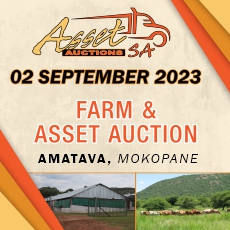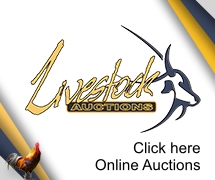SA Hereford Cattle Breeders Society
The South African Hereford Cattle Breeders’ Society was established at the Witwatersrand Show on 6 April 1917, to protect and represent the interests of the growing number of Hereford producers in the country.
Sir John Ray was appointed as the society’s first president and the Constitution was accepted five months later on 6 September.
The first two Hereford bulls were imported from England to South Africa in 1892, followed by George Moorcroft, who in 1901 imported the Hereford bull, Southern Cross, along with 14 female animals, and James Gray, who in 1902 imported a bull called Rufus and two cows, Abigail and Dolly.
Sir Abe Bailey and GW Young, who imported large numbers of Herefords in 1903, are considered the founders of the breed in South Africa. Charles Eustace is considered another pioneer, for starting the Arbor Hereford Stud in Underberg KwaZulu-Natal in 1945, which today is the oldest stud in the country.
Jarros Investment started the Vicedale Hereford Stud in 1948. The stud, while under Jarrosson Estates, had over 2 000 registered cows, making it the largest Hereford stud and largest registered herd of all breeds in the world. It was also the first SA Hereford herd and part of five breeds to start official performance testing by the Department of Agriculture in Irene.
Herefords were recorded by South African Stud Book between 1906 and 1917, with the first volume including pedigrees of the earliest importation. The first Bull growth test station at Irene was also opened with a Hereford bull as a demonstration animal.
Origin of SA Hereford
Hereford cattle seemed to have descended from the small red cattle of Roman Briton and a large Welsh breed.
They are considered one the oldest English breeds, taking their name from the Herefordshire country of England, where they have evolved into the high beef yielding, red coloured animals with their characteristic white head.
Evidence exists of farmers, who kept production records of the breeds as far back as the early 1700s, with high meat yield and production efficiency being a high priority even then. The early animals were actually much bigger than the modern Herefords, with records existing of a show bull, called Cotmore, that weighed over 1 760 kg.
Today, the size of the animals largely depends on production conditions, with the ones in South Africa being typically medium-framed, with an average weight ranging between 900 kg and 1100 kg for a bull. The cows have excellent reproductive traits, with the South African Hereford for the past two decades having the lowest inter calving periods, which refers to the number of days it takes for a cow to reproduce, of all major breeds in the country.
The Hereford Herd Book was opened in England in 1846. The book has since been closed to any animal whose sire and dam had not been recorded up until 1886, to protect the purity of the breed.
Services of SA Hereford Cattle Breeders Society
The SA Hereford Cattle Breeders’ Society aims to promote and protect the interests of Hereford breeders in South Africa.
To this end, the SA Hereford Cattle Breeders’ Society strives to compile, keep and maintain accurate records of Hereford pedigrees and particulars of all animals registered through the Society by the Association in the Herd Book. This is done, firstly to maintain the purity of the breed and secondly, to promote and encourage the breeding as well as genetic improvement of the production potential of the breed based on sound ion criteria.
The cattle are divided into two divisions, namely the Proper Hereford Division and the Pureblood Hereford Division, which are recorded in separate herd books. Both of these are again divided into two sections, namely horn and polled. The integrations of the proper and pureblood animals are not allowed.
The SA Hereford Cattle Breeders’ Society compiles and maintains breed standards based on production testing records and visual appraisal for genetic defects and conformation in as far as it is related to functional efficiency. All production data is made available to the council, inspectors and appointed subcommittees.
Besides this, the society actively promotes the breed through various media channels and the competitive showing of animals. It also promotes and hosts the sales of animals, with even Hereford branded clothing being available on the society’s website.
Information is communicated to members via the internet, newsletters, journals and the annual general meeting, which is hosted once a year.
Membership of SA Hereford
SA Hereford Cattle Breeders’ Society has different categories of members. Ordinary membership is open to anybody who directly or indirectly engages in the breeding of Hereford cattle.
With approval at the annual general meeting, these SA Hereford Cattle Breeders’ Society members may be promoted to life members.
People who have been providing specialist services in the interest of breeding may be elected as honorary life members, whereas those who have provided special services but not been associated with the breeding of Herefords may be elected as special honorary members.
People, who are interested in the breed but do not own Hereford cattle, may become associate members, and any person under the age of eighteen may become a junior member. Special honorary, associate and junior members do not enjoy the full benefits of memberships, as they are not allowed to vote or be elected as Council members.
A written application needs to be made in which the applicant agrees to abide by the breed standards and constitution. Annual subscription and herd assessment fees are charged.
The SA Hereford Cattle Breeders’ Society association has clear guidelines in terms of record-keeping and the way in which animals should be marked and identified. Records have to be kept of all registered animals, and all animals must participate in performance testing. No birth notification will be accepted for registration unless the sire is on record with both the society and the association as having been officially DNA profiled.
Only animals that comply with the strict standards of the breed and have no breeding defects or physical deformities are accepted for registration. Animals that do not make the grade may not be used for reproduction purposes in a stud, although they may be reverted for production in commercial herds.








